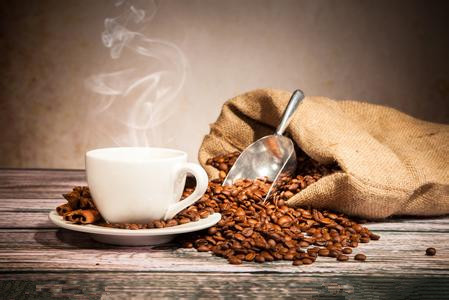Name of Fine Coffee Bean basic knowledge Manor or Cooperative

As the trade in boutique coffee is booming, the relationship between individual coffee growers and buyers in the country of origin is getting closer and closer. As buyers and sellers have a direct trading relationship, some good coffees no longer need to be shipped together through the process of piling up goods in batches. There are fewer steps for growers to hand over coffee beans directly to buyers and then to end consumers.
For quality-oriented Estates owners, they will include the various flavors of their consumer partners in the estate coffee bean category records to facilitate future transactions. In English, the manor is called "Estates", or the larger "Plantation", and the smaller "Farm", while in Spanish it is called "Finca". Some coffee farms may have their own production and processing equipment, which can peel, flesh, sheepskin, and dry on their own; smaller ones can also send coffee fruits to the public treatment equipment set up by the cooperative for treatment. to get a neat level of raw coffee beans. Whether it is either of the above two, the final buying and selling stage is a direct response from individual estates to the buyer's transactions, rather than mixed with raw coffee beans from other estates in the same producing area, in theory, this approach can reflect the cultivation of coffee beans and the stability of the back-end processing steps, and allow the manor to confirm its own quality.
Cooperatives of smaller coffee farms can achieve a similar degree of stability. Individual small farms negotiate transactions with market traders or bakers through the special mechanism of co-operatives, which is no longer treated as exploited at various levels in the past. Coffee beans produced by these cooperatives usually earn better income for coffee farmers by joining agencies related to environmental protection or social care.
However, the prevalence of the manor concept continues a lot of trickery, because some unscrupulous estates mark their coffee beans grown elsewhere with their most famous coffee beans and sell them at higher prices. This phenomenon makes it difficult to market coffee beans under the manor brand name, because some unscrupulous estates would rather make huge profits by fraud than really improve the quality of the manor coffee beans. this also makes other honest and honest manors suffer, because the market will be dragged down.
Fortunately, however, most well-established estates are less likely to sell fakes. Because these estates usually work with dish traders or roasters to deal with their manor coffee beans, and plate traders and roasters have to take care of their own reputation, it is very difficult for them to steal chicken without losing rice. Most of the known fakes on the market are high-priced regional coffee beans, such as those marked only by the names of Jamaica-Jamaican Blue Mountain or Hawaii-Hawaiian Kona, which are more difficult to trace than those produced by a single independent farm or independent processing plant.
Important Notice :
前街咖啡 FrontStreet Coffee has moved to new addredd:
FrontStreet Coffee Address: 315,Donghua East Road,GuangZhou
Tel:020 38364473
- Prev

Relationship between planting environmental conditions and grade names
Finally, we need to understand the relationship between planting altitude and coffee grade. Arabica beans grown at higher altitudes mature more slowly than those grown at lower altitudes, produce denser beans, and exhibit higher acidity and complexity in the cup. But in most of the coffee world's cognitive rules, the factor of growing altitude is not necessarily graded.
- Next

Certification mark name or other kind of label name
With the growing relationship between coffee farmers in the producing areas and the roasters and tradesmen who buy the land, many kinds of projects related to coffee production or focusing on ecological protection have emerged. It is hoped that the environmental damage caused by this money-by-money high economic crop can be minimized. In fact, these projects will educate consumers to spend a little more money on coffee.
Related
- Beginners will see the "Coffee pull flower" guide!
- What is the difference between ice blog purified milk and ordinary milk coffee?
- Why is the Philippines the largest producer of crops in Liberia?
- For coffee extraction, should the fine powder be retained?
- How does extracted espresso fill pressed powder? How much strength does it take to press the powder?
- How to make jasmine cold extract coffee? Is the jasmine + latte good?
- Will this little toy really make the coffee taste better? How does Lily Drip affect coffee extraction?
- Will the action of slapping the filter cup also affect coffee extraction?
- What's the difference between powder-to-water ratio and powder-to-liquid ratio?
- What is the Ethiopian local species? What does it have to do with Heirloom native species?

